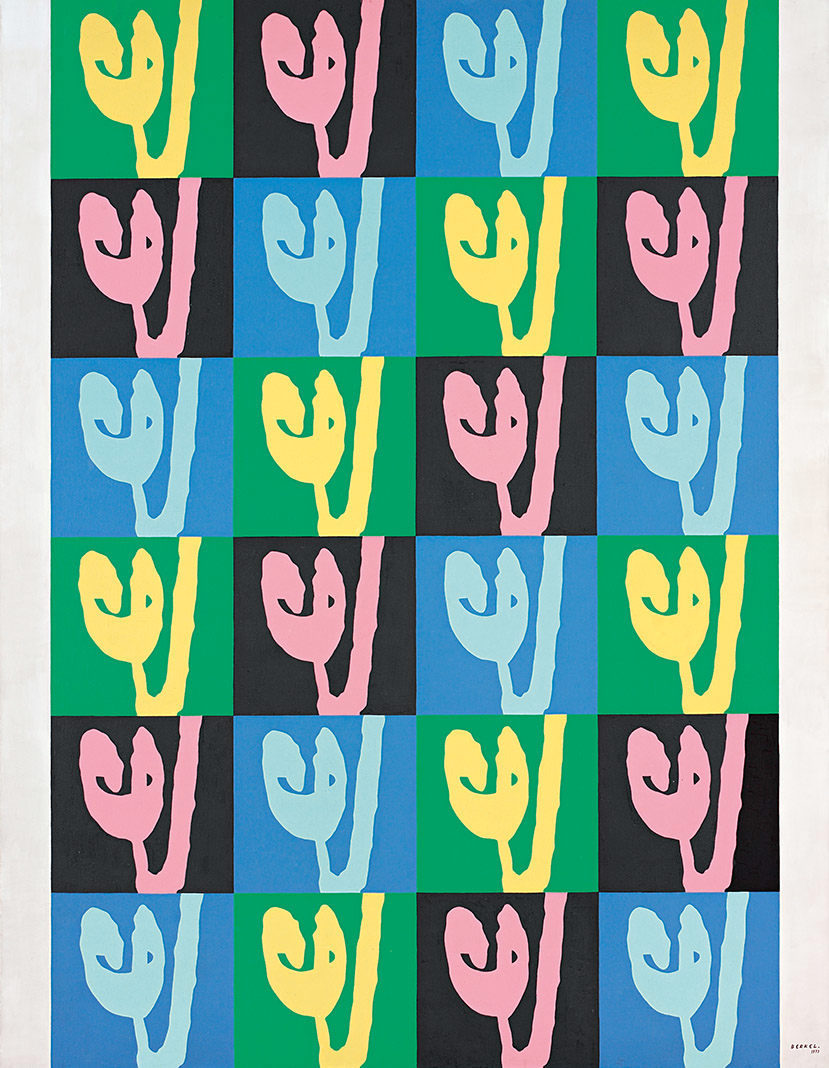- Closed Today
- Ticket
- Shop
- Membership
- TR EN

Sabri Berkel, 1907-1993
Abstract Composition, 1973
Skopje-born Sabri Berkel studied art at the Belgrade School Fine of Arts and in the studio of Felice Carena at the Fine Arts Academy of Florence. He came to Turkey in 1935 and taught in a number of schools before being appointed teaching assistant at the engraving studio in the Academy of Fine Arts and he joined the d Group in 1941.
A skilled artist of the human form, Sabri Berkel started to explore Cubist abstraction in the 1930s, and created a series of paintings depicting women wearing traditional headscarves, street peddlers, fishermen, and village scenes. In the 1950s he turned his attention to geometric abstraction and began making use of forms derived from the traditional Turkish arts of calligraphy and marbling. In the 1960s, he gravitated toward color abstractions, which he addressed meticulously. From the 1970s onward, Berkel favored form over subject, and created more minimalist compositions. Later in his career, the artist steered his practice completely toward investigations of color. He emphasized the harmony of colors that connect with one another like pieces of a puzzle.
Berkel’s “Abstract Composition” paintings here exemplify the geometrical constructions that the artist pursued throughout his career, the way he mathematically structured his paintings, and a strong relationship between pattern and background—the compositional balance of color, shade, linearity, pattern, and rhythm. Evidence of his having come from a tradition of engraving, Berkel’s vivid colors and repetitive patterns demonstrate the influence of contemporary graphic design on his art practice, which can also be observed in the works of Andy Warhol.
Painting
Oil on canvas
İstanbul Museum of Modern Art Collection
Eczacıbaşı Group Donation